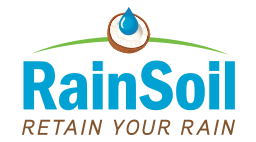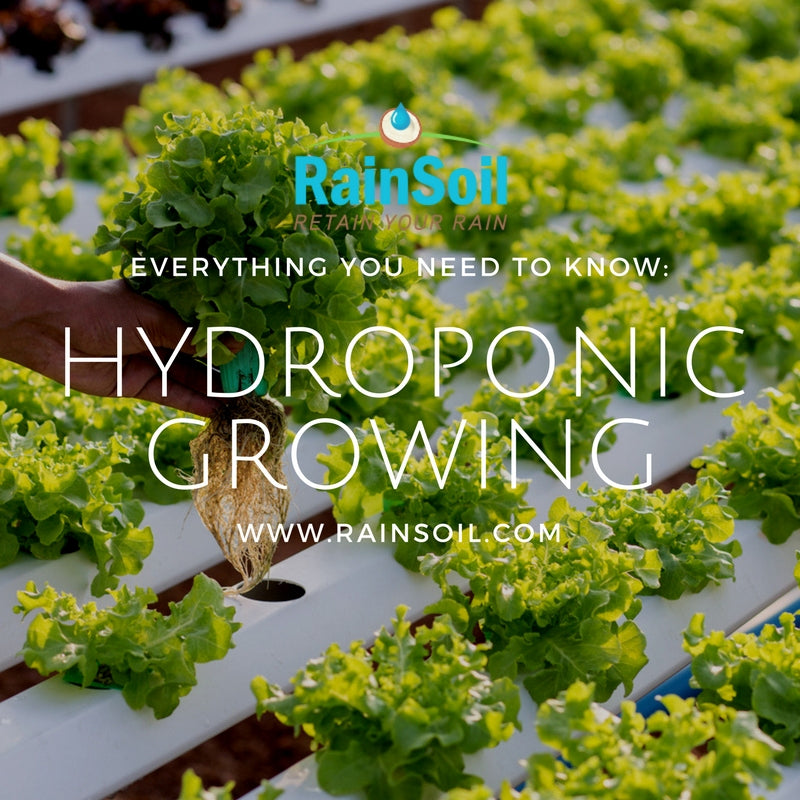- Total $0.00
Hydroponic Growing: What You Need to Know | RainSoil
Hydroponics, the term that seems to be buzzing on everyone’s lips. You may have heard of it in the context of alternative growing methods, but what’s the big deal? What is hydroponic growing, why is it so popular all of the sudden, and what does it mean for the future of agriculture?
At this juncture, hydroponic growing is still very much “up- and- coming.” For reasons that we’ll delve into later, it isn’t yet at the level of good ol’ fashioned soil farming. However, this innovative method has the early markers of being more than just a fad. Hydroponic growing is soilless, which means that it requires less space and fewer resources. This, combined with the lack of “mystery” for consumers about where the food is coming from, have people talking about it more and more.
Curious about what hydroponic growing entails, and whether it’s an option for your own operation? Keep reading for the ins and outs of hydroponics and find out why it’s exploding in popularity as we speak.
So, What Is Hydroponic Growing?

Hydroponic growing is the method of cultivating plants using an aquatic-based system rather than using soil.
You might be thinking, how is this possible? Doesn’t soil provide the nutrients plants need to grow? Isn’t this why I’ve been buying it all these years? Well, what plants actually need to thrive is water and nutrients. The hydroponic method keeps the nutrients but eliminates the soil. The nutrients are provided within a solution which is applied directly to the roots, feeding the plants what they need– sans dirt. This provides avid growers with a clean and simple way to improve agricultural practices.
The answer to whether hydroponic growing is an option for you is, in short, yes. That is if you’re interested in growing with sustainability. There are many variations of hydroponics systems, ranging from systems you can set up in your home to vast professional operations. This means that whether you’re a commercial grower or you’re just growing food for your household, setting up a hydroponic system is possible.
What Is Hydroponic Farming?

This is the aforementioned commercial side of hydroponic growing. In other words, hydroponic farming involves setting up a large system to grow soilless, edible crops for distribution.
Hydroponic farming is becoming increasingly popular as consumers are becoming increasingly aware of where their food comes from and how it’s grown. Now more than ever, people are demanding organic produce that isn’t doused in pesticides. A recent study revealed that on average, one acre of strawberry crops are sprayed with 300 pounds of pesticides. At this point, they may as well be advertised as pesticide flavored.
Though there’s some case to case variation, most hydroponically grown produce doesn’t require pesticides as it’s grown inside. Hydroponic crops are especially popular in dense, urban areas where rooftop growing is the only option due to lack of space. Additionally, hydroponics provide the option for vertical farms. Vertical farms save space by allowing crops to grow in vertical stacks rather than horizontal rows of plants.
Perhaps the factor that contributes most to the popularity of hydroponic farming is that it’s a means of production for areas with harsh climate conditions such as desert of arctic areas. Growing in these areas is now possible without paying for the precious commodity of soil, which can’t be cultivated in these regions.
Advantages of Hydroponic Growing

You already know about the space and resources that growing hydroponically can save, but what are some of the other benefits?
First off, if you’re tired of digging soil out of your nail beds, this might be the method for you. Hydroponic growing critically cuts down the mess of traditional growing, saving you loads of clean- up time.
Additionally, a hydroponic system allows you to grow food year round as your plants will be inside and safe from the elements. Speaking of safety, growing food indoors also keeps plants safe from harmful pests and plant diseases that can ruin your grow. When you’re growing indoors, you control the environment that your plants thrive in.
What Plants Can I Grow Hydroponically?

The most rewarding part of growing hydroponically is when you finally get to harvest and enjoy your all natural crops. So you may be wondering, how can you make the best of your harvest? Which crops are most likely to thrive in a hydroponic setting?
Leafy green vegetable such as different varieties of lettuce, kale, arugula, and mixed greens grow particularly well in hydroponic systems. Similarly, fresh herbs will also thrive, so add parsley, basil, cilantro, sage, and tarragon to your list.
As for vegetables, artichokes, beans, broccoli, asparagus, cabbage, beets, and brussel sprouts will do well in a hydroponic system.
Crops that require an excessive amount of space such as melons and berries will not do as well in a hydroponic system. However, technological advancements are being made every day, driving this method of farming towards becoming competitive with traditional methods.
If you’re interested in learning more about soilless methods of farming, don’t hesitate to contact us. Thanks for stopping by!



